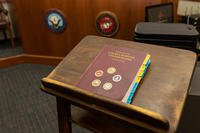The good news for fitness beginners, especially if overweight, is that you will see dramatic results compared to the average trained person working out for the same period of time.
For instance, the person who wants to lose 100 pounds can do that in a healthy manner in 10-12 months. However, the hardest 10 pounds to lose are the last. The way you achieve any fitness result specifically depends on your goals and current fitness level.
How should you begin training?
That depends on your goals. If you are looking at building pure strength like a powerlifter, you need to lift heavier weights for fewer repetitions. But you also need to add in adequate recovery activities (nutrition, sleep) and limit long cardio activity. Keep in mind that this type of training is good for people who only want to get stronger.
In tactical fitness, you also need to be good at other elements (strength; power; speed; agility; muscle stamina; cardio endurance -- run, swim, ruck; flexibility; mobility; and job-dependent skills). Where most people (especially in the tactical population) go wrong with focusing on strength is that they also add in significant cardio activity and days of calisthenics between weight-training days.
It is very difficult to build strength, cardio endurance and muscle stamina well at the same time. You may see progress at first, but after several weeks, you will find that your strength gains are reduced, you cannot run much faster than before and your high-repetition calisthenics testing scores may have suffered.
However, it is easier to maintain all of the above once you have these elements of fitness, as long as you train them. Getting them to advanced levels is achieved best by breaking down the year into cycles of 6-12 weeks. This is known as periodization. The powerlifter needs pure strength/lifting skills only; the tactical athlete needs to be good at everything.
Periodization for tactical athletes (and beginners) is achieved with a balanced blend of cross-training.
Cross-training effects on beginners (weights and cardio). In this study, sedentary men increased their muscle mass (gained muscle) and lost fat at the same time by mixing weight training with cardio activity. The muscle gained and fat lost was much greater for the group that did resistance training and cardio activity. The impressive results were achieved, because they were beginners and had plenty of fat to lose and muscles that were underdeveloped. Now, the journey to maintain and improve these results should evolve into an elemental-focused training cycle: Do a strength cycle to build strength, power and muscle while maintaining endurance. See how to break up all the elements of fitness throughout the year, making improvements in each while maintaining others that would oppose each other (strength and cardio gains).
One way to arrange your tactical training is to break it up with the seasons:
Winter lift cycle. This is the build muscle and strength phase. Focus on strength (lift heavy weights), reduce running to a minimum (timed run distances), and cross-train only with non-impact cardio. Warming up with calisthenics (push-ups, squats, lunges, pull-ups, etc.) is a good way to maintain muscle stamina (tactical strength). Study a few different ways to build strength with the Gain Strength (1RM) Lift to Failure Study.
Spring/summer stamina and endurance cycle. This is the maintain muscle, build stamina and endurance phase. Focus on progressing back into running (adding 10%-15% time/distance per week) from your current weekly mileage. Mix in higher-repetition calisthenics as the bulk of the workout, with supplemental lifts to maintain strength and balance out anything the calisthenics missed. With high amounts of calisthenics, you may have to eat to maintain weight. If you do not want to lose muscle mass, make sure you are getting enough calories so you do not lose weight. Check your weight often.
Spring/fall cycles. These cycles are more a transition period from one cycle to the other. For instance, add weight vests to your calisthenics as the fall months start and slowly decrease the repetitions of calisthenics and add more weights. Do the same but in reverse in the spring (tactical fitness).
Mobility. Never forget the ability to move. Each workout or non-workout day should have some element of stretching, foam rolling, self-massage and relaxing. As we age, the body's ability to recover and move without pain will depend on the effort you put into mobility and flexibility. The addition of flexibility and mobility training into the week (yearly) is critical to your recovery and overall well-being (tactical mobility).
This is just one of the infinite methods of creating periodization programs. Periodization must be flexible, and the individual must adjust accordingly to get the results needed. Sometimes, extending a cycle or cutting a few weeks off a cycle is needed. Be smart and listen to your body.
Stew Smith is a former Navy SEAL and fitness author certified as a Strength and Conditioning Specialist (CSCS) with the National Strength and Conditioning Association. Visit his Fitness eBook store if you’re looking to start a workout program to create a healthy lifestyle. Send your fitness questions to stew@stewsmith.com.
Want to Learn More About Military Life?
Whether you're thinking of joining the military, looking for fitness and basic training tips, or keeping up with military life and benefits, Military.com has you covered. Subscribe to Military.com to have military news, updates and resources delivered directly to your inbox.
















